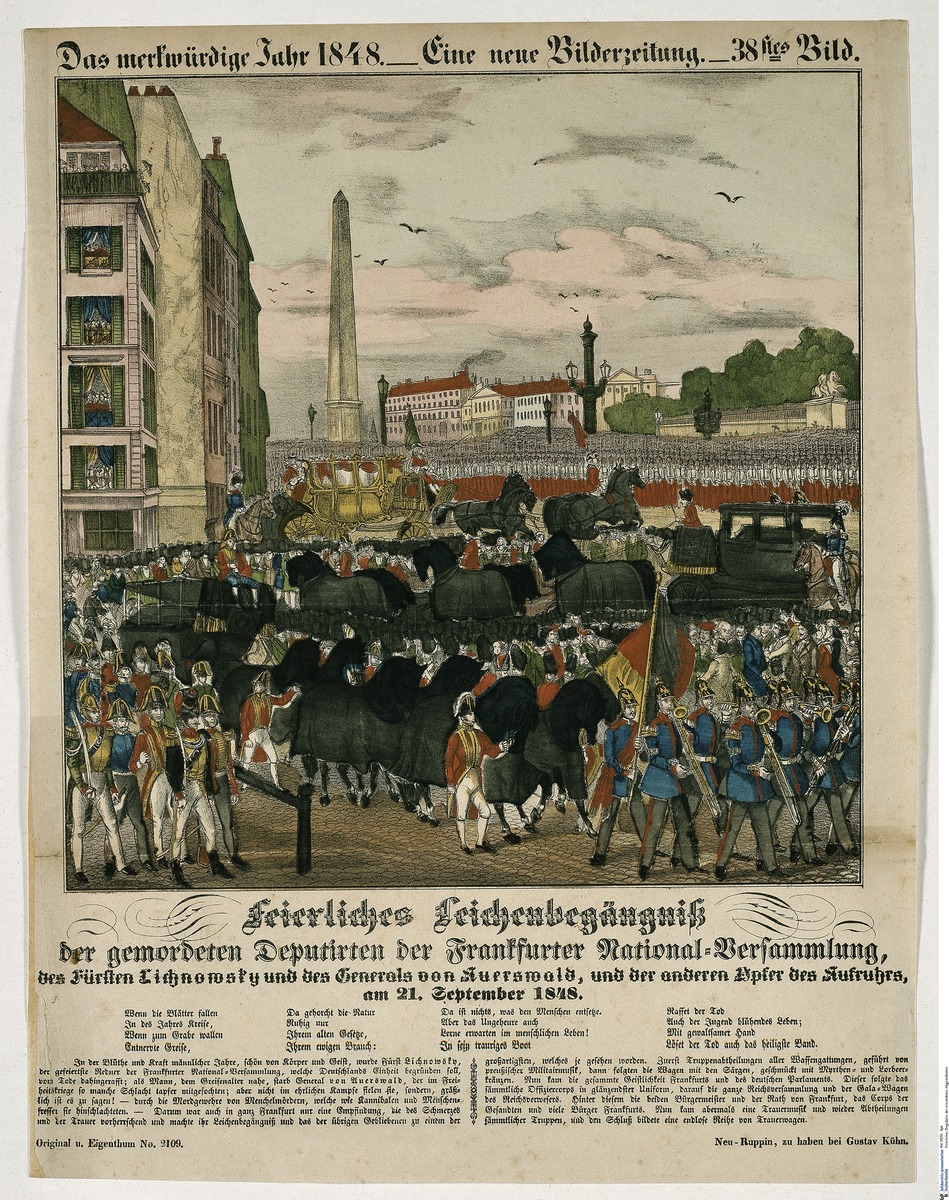Abstract
The uprising in Frankfurt on September 18, 1848, was a direct result of conflicts within the Frankfurt National Assembly (also known as the German National Assembly or the Frankfurt Parliament) on the issue of an armistice with Denmark in the German-Danish war. Members of the democratic left in St. Paul’s Church regarded themselves as champions of Germans’ right to national self-determination in Danish Schleswig and as adversaries of Prussian high-handedness in German foreign policy. Consequently, when the National Assembly initially rejected an armistice on September 5, the democratic left viewed it as a triumph. The reversal a week later and the acceptance of an armistice by the majority on September 16 sparked popular uprisings against the Frankfurt National Assembly that claimed more than 80 lives. Among the victims were the conservative deputies Prince Felix von Lichnowsky (b. 1814) and General Hans von Auerswald (b. 1792), whose murder by an angry mob generated much publicity and was condemned by conservatives and moderate liberals alike. The uprising, quickly suppressed by the Prussian and Austrian military, showed reformers that their efforts were threatened not only by autocratic governments, but also by radical democrats. In response, they called for harsh penalties for any violent action against parliament. Lichnowsky and Auerwald’s funeral on September 21, 1848, is depicted in this print by G. Kühn in the Neuruppiner Bilderbogen, 1848.
